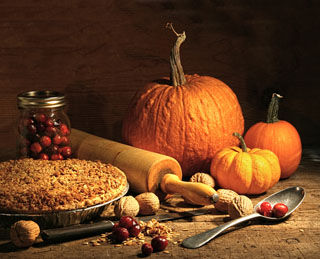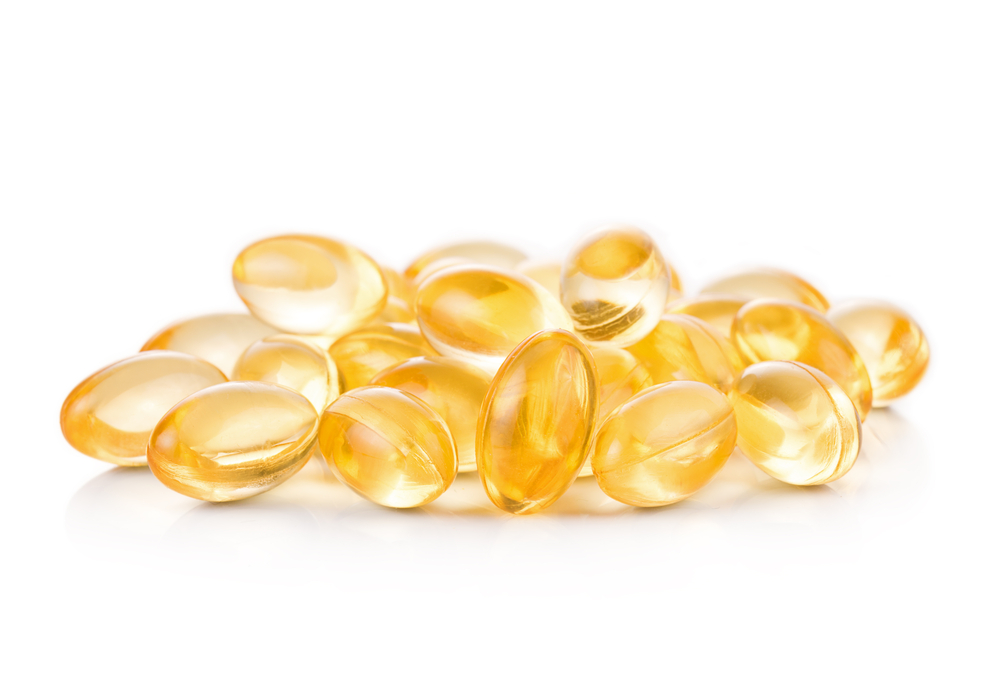Pumpkin, cranberries and other food traditions should grace your table more often
Turkey is a given. Not only is it great for Thanksgiving, but it’s great for your health, and as such it’s fortunate that turkey is part of America’s year-round cuisine. But some of turkey’s fruit and vegetable companions are often neglected, despite their healthy potential.
Here we’ve listed some of the best foods from holiday traditions all across America, along with their suggested uses, both traditional and year-round.
Pumpkin
Pumpkin pie is far from the most sinful dessert available. On the contrary, pumpkin is one of the most nutritious foods available, being an excellent source of vitamins A, B, C and E, iron, potassium, thiamin, folate, and riboflavin, among other nutrients. And raw pumpkin offers all this for only 30 calories per each fat-free, cup-sized serving.
Of course, pumpkin can be served without the added sugars and fats that come along with most pie recipes. Instead of pie, try serving it as an appetizer as a warm cup of pumpkin soup.
At many grocery stores, small raw pumpkins are often sold alongside other varieties of winter squash, and they can be served the same way. Leftovers can be turned into a puree, which can in turn be used to fill ravioli, mixed into a soup, or added to breads. In Thai cuisine, it’s even served in curry.
www.thaitable.com/thai/recipe/vegetarian-pumpkin-curry
Butternut Squash
Like pumpkin—perhaps because they are so closely related—butternut squash offers a plethora of nutrients for minimal calories, only 63 per one-cup servings. This squash is packed with vitamins A, B, C and E, plus potassium, fiber, calcium and others. Around the holidays, it’s usually served pureed, with warm flavors such as brown sugar and nutmeg. But there’s no reason to avoid butternut squash year-round. In the summer, it can be served grilled, or cubed and served with Provençal flavors such as garlic, parsley and oil.
Provencal Winter Squash Gratin from Vegetarian Cooking for Everyone
- 2 to 2.5 pounds butternut squash
- 5 garlic cloves, finely chopped
- ½ cup chopped parsley
- Salt and pepper
- 3 tbsp. flour
- Olive oil
Preheat the oven to 325 and oil a shallow earthenware baking dish. Peel the squash and cut it into even-sized cubes, from 1/3 inch to 1 inch. Toss it with the garlic, parsley, salt and pepper. Add the flour and toss again until the pieces are coated lightly, letting the excess fall to the bottom. Pile the squash into the dish and drizzle oil generously over the top. Bake, uncovered, until the squash is browned and tender when pierced with a knife, about 2 hours. When served, the individual pieces will collapse into a puree.
{Note from Emma—as you’re selecting the recipes you wish to include, I highly recommend this dish. It’s one of my personal favorites. I even lugged my vegetarian bible here to make sure I got it right.}
Turnips and Rutabagas
Though the specific name for this peculiar, pale vegetable varies from region to region, it is a frequent—and remarkably healthy—addition to many holiday meals, particularly in the eastern United States. Here you will find vitamins B and C, Thiamin, Calcium and fiber, and less than 50 calories per cup. For Thanksgiving, turnips are generally served boiled and mashed, like potatoes, and mixed with apples and brown sugar for a sweeter dish or with other root vegetables, rosemary and butter. But they also make for wholesome, cheap ingredients year-round: in the fall, baked in a variety of gratins or added to potato soup, or sliced and served raw over salad for summer.
Another underutilized root vegetable worth trying, to throw something new into the mix, is celeriac, also known as celery root for its similar taste to the more familiar vegetable. Whether or not you go the adventurous route, both celery and celery root boast high quantities of vitamins C and K, fiber and potassium, for a minimal number of calories.
www.simplyrecipes.com/recipes/turnip_and_potato_patties/
Sweet Potatoes
Sweet potatoes have usually been reserved almost exclusively for casseroles served Thanksgiving Day. Recently, however, they have begun making perennial appearances in popular American cuisine, and for good reason: sweet potatoes pack an extremely high amount of vitamin A—nearly 400% the average daily requirement—plus fiber and potassium. Traditionally, they’re served with brown sugar and butter, or, more recently, fried, though neither of these is the best option, since raw sweet potato alone is relatively high in calories, with more than 100 per cup serving. But sweet potatoes are just as good as russets when baked or mashed and served with a light topping like chives. Still more interesting combinations can be found if you’re willing to be creative. For example, ginger and soy will offer an unexpected Asian twist.
allrecipes.com/Recipe/Caribbean-Sweet-Potato-Salad/Detail.aspx
Cranberries
If you avoid the sugary, jellied variety, the vitamin C content of cranberries alone makes these worthwhile. In addition to more than 14 mg of vitamin C, cranberries also offer high quantities of fiber, plus vitamins E and K. But naturally, cranberries are exceptionally bitter, so they can be difficult to eat raw. Nonetheless, with a little sugar, they blend nicely with oranges, apples and pomegranate. Year round, try them baked into breads and muffins with orange or lemon zest.
allrecipes.com/Recipe/Cranberry-Pomegranate-Sauce/Detail.aspx
Plums
Plums make an annual appearance around Christmas, usually in the shape of puddings, pies and pastries. But for less than 80 calories per cup-sized serving, plums bring vitamins A, C and K into your diet. They don’t have to be baked or sweetened, but serve can serve instead as a base for marinades on chicken or pork.
allrecipes.com/recipe/chicken-with-plum-glaze/detail.aspx
Persimmons
Here’s an unusual fruit for those looking to spice up their traditions with something new. The persimmon is more popular in Japan, but it has found a niche market in Indiana, where it is frequently served as persimmon pudding for Thanksgiving. High in both vitamin C and iron, with only 30 calories per cup, this is worth a second glance.
It should be noted that there are two major varieties of persimmons—a sweet variety, and another that is intensely bitter. In either case, they need to be very ripe before serving, as unripe persimmons are inedible.
In America, persimmons are used almost exclusively in baked goods such as cakes, cookies and pies, but in Japan, they are often eaten raw, or dried. In the case of the former, the top is cut off, and the insides scooped out with a spoon. A few modern salad recipes call for persimmon.
allrecipes.com/recipe/persimmon-pudding {This is an easy version that comes out more like a cake than a pudding}
allrecipes.com/recipe/mrs-reagans-persimmon-pudding {This is the full-on, all-out version. It sounds pretty intense.}
allrecipes.com/recipe/traditional-indiana-persimmon-pudding {And this is the version that may be something like the middle ground, but no one can agree on whether or not it’s the real deal.}


No Comment